Culture
Southern Saints - Social Reformers In Tamil Nadu You’ve Probably Never Heard About
Aravindan Neelakandan
Apr 22, 2016, 01:32 PM | Updated 01:32 PM IST
Save & read from anywhere!
Bookmark stories for easy access on any device or the Swarajya app.
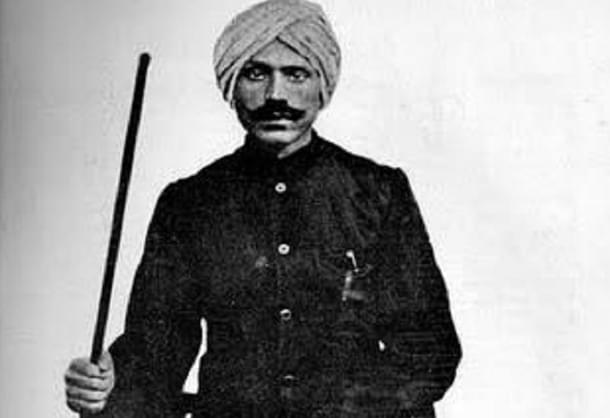
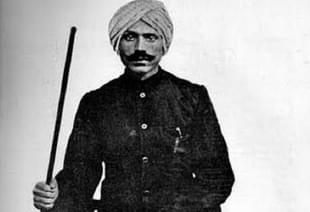
If you ask a Tamil the question ‘Who fought for social justice in your state?’, in most cases the answer will be a list of Dravidian politicians. A general impression has been created in the state that it is because of the Dravidian parties and their vehemently anti-Hindu discourse that Tamil Nadu has become a state conscious of social justice.
Today, cranky pseudo-scientific statements by Kancha Illiah and more sophisticated articles of Ramachandra Guha, disseminated by old media barons, are reinforcing this failed anti-Hindu model as the only approach to social-emancipation.
Every time such nascent anti-Hindu rhetoric has been peddled as social justice discourse it has failed miserably. The BSP initially too spewed venom on Hindu deities but ground realities forced it to accept the essential Hindu nature of the society. From ‘hit the Brahmins, Thakurs and Banias with shoes’ (‘Tilak, tarazu aur talwar, inko maro joote char’) the BSP slogan became ‘Not elephant but Ganesa: embodiment of Brahma, Vishnu and Siva’ (‘Haathi nahin Ganesh Hai; Brahma, Vishnu, Mahesh hai’).
In Tamil Nadu, the anti-Hindu rhetoric of the Dravidian movement was totally rejected by the people when they showed their affection for a definitely pro-Hindu M.G.Ramachandran and chose him over M.Karunanidhi. The DMK supremo delights in throwing obscenities at Hindu religion in the name of rationalism.
Eminent social science institutions subsidized by Indian tax payers have never bothered to look into the mistake of equating anti-Hindu rhetoric with social justice. Many institutions promote an utterly failed model because of their own vested interests.
In the below list we will see how real social emancipators of Tamil Nadu drew strength and sustenance from Indic values rather than label native traditions as ‘anti-Dalit’
Madurai Pillai
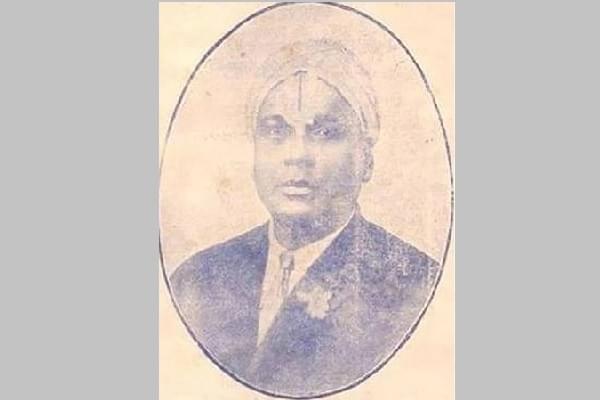
Today, a section of activists have come to realize the need to visit the economic thoughts of Dr. Ambedkar and speak about social emancipation through capitalism. Milind Kamble and Chandra Bhan Prasad spearhead this movement through the Dalit Indian Chamber of Commerce and Industry (DICCI).
Without using the ‘Dalit’ label, Madurai Pillai, an entrepreneur from Paraiar-Valluvar community, was a forerunner in this direction. A shrewd businessman and ultimately the owner of a mercantile ship, he immersed himself completely in social charity and cultural empowerment of Indians in what was then Burma (Myanmar). He was the head of the Hindu Parbalana Sabha of Burma for many years.
In 1881, he established a printing firm with the sole purpose of disseminating the hymns and life histories of Nayanmars - the devotees of Shiva. For poor Indians coming to Burma for a livelihood, he established a lodge named Rest House. Here, all Indians with no bar of caste, creed or language could stay and search for jobs.
In 1886, in his native Tamil Nadu, he established Sat Vishaya Dhana Sangh for creating Shaiva-Vaishnava unity. In 1896, he started a Hindu youth drama group to enact dramas with spiritual and socially progressive messages to the people.
Rettaimalai Srinivasan
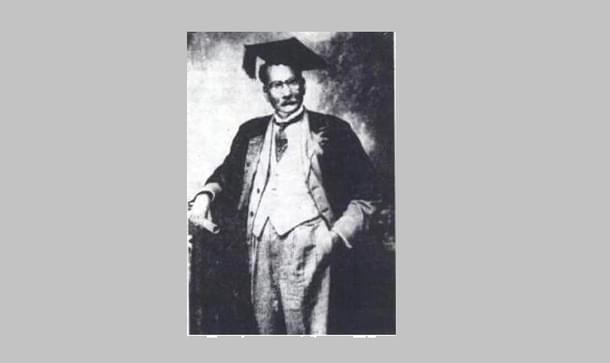
Affectionately called Thatha (Grandfather) for his untiring efforts to re-establish the cultural ownership and legacy of the scheduled communities, he accompanied Dr. Ambedkar to the Round Table Conference.
He rejected demeaning terms like ‘Depressed classes’ , which was perhaps the precursor to today’s label ‘Dalit’. He wanted Scheduled Communities to be named ‘reformist Hindus’ because they rejected the disease of untouchability plaguing the so-called caste Hindus.
He was against conversion as a solution to social emancipation. At a time when Dravidianists claimed that the Tamil religion was different from the ‘Aryan Hindu religion’, he emphasized the spiritual oneness of the so-called Aryan and Tamil streams of Indic traditions.
He further vehemently opposed any move to claim the rights of scheduled communities by those who converted to Christianity. He worked tirelessly for the abolition of untouchability and freeing Tamil Nadu from the shackles of social stagnation.
M.C. Rajah
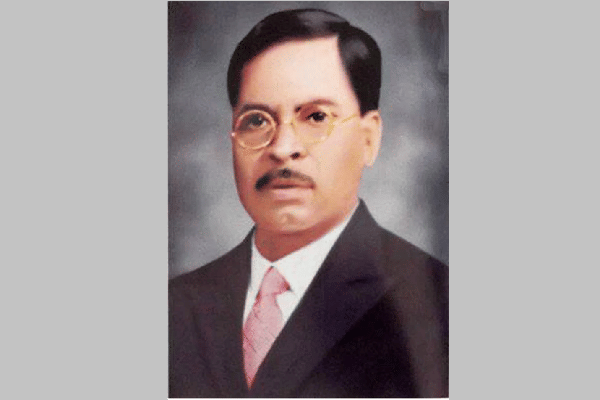
M.C. Rajah broke the shackles that held back scheduled community students in Pachayappa college. He was extremely concerned with the possible alienation that might come with British manipulations and the caste chauvinism of so-called upper caste Hindus. A great leader whose personality nationally rivaled even Dr. Ambedkar, he was also a proud Hindu.
Uncompromising in his pursuit for social justice, he was also strongly rooted in Hindu culture. He famously said that before creating Hindu-Muslim unity there should first be Hindu unity.
He also opposed religious conversion as a solution to caste problems. When tradition was cited as a reason to soft pedal reform, he said that when an injustice has been perpetuated in the name of age-old tradition, it is all the more reason for abolishing it than tolerating it.
He declared that his vision was to see Hindus united as one strong egalitarian body through constitutional and social reforms so that they could attain a pristine state of great glory.
Countering the victimhood narrative of Hindu religion suppressing sections of society for millennia, he marshaled facts after facts from history which showed the scheduled community to be the real custodians of Hindu culture. He pointed out that it was at the feet of a scheduled caste member that Shankaracharya received practical non-dualist wisdom.
He cited evidence from inscriptions—which state that Parayar were considered judges in land disputes related to temples grants—to eye witness accounts of eighteenth-century temple festivals, like that of Thiruvarur Shiva temple where the Parayar community leader used to accompany the deity in the elephant.
He reclaimed the respectful place of scheduled communities in the cultural and spiritual space of Hinduism. He enjoyed good relations with Hindu Maha Sabha leaders Dr. Moonje and Lala Lajpat Rai. He entered into an agreement with Dr. Moonje and expressed his gratitude to Lajpat Rai for making the abolition of untouchability the precondition for national freedom.
Subramania Bharathi
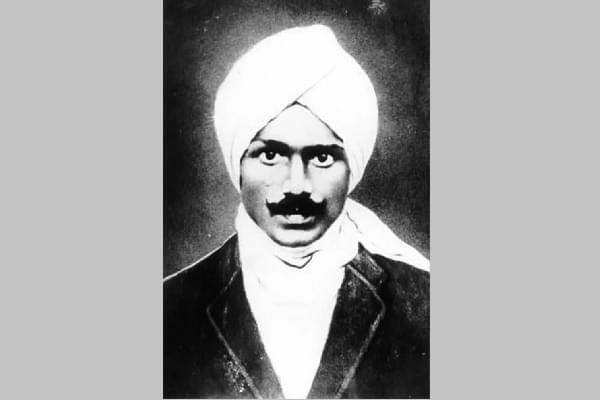
The great poet not only sang about women’s liberation and annihilation of caste but initiated the sacred thread ceremony for all without the barrier of caste. Initiated by Sister Nivedita into the cause of women’s liberation, he composed inspiring and lucid poetry that asked women to break the shackles of patriarchal chains.
The traditionally attributed qualities of shyness and humility should go to the dogs, he wrote, and asked women to have a magnificence in their walk, straightforward vision and values that should never be compromised. He never scorned the Hindu religion or culture. Rather he derived his inspiration from Vedanta.
Vaithyanatha Iyer
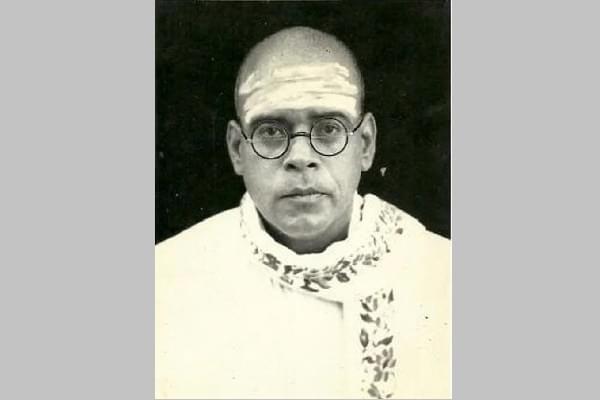
He initiated a temple entry movement and made a great impact on society when he took people of all communities into the famous Madurai Meenakshi temple. To this day this event represents the change in the consciousness of the so-called upper castes and the complete acceptance of the rights of all Hindus to enter all the major temples in Tamil Nadu. He too was inspired by Hindu spirituality and Gandhian values.
Kakkan
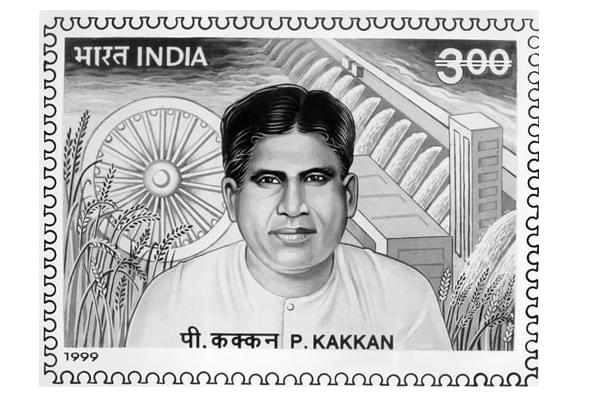
Kakkan fought for the water rights of scheduled communities in Tamil Nadu. He inspired communities such that when members of a particular community opposed scheduled community members from taking water from a common source, leaders from the same community came forward to sacrifice their own lives for the rights of the scheduled community brethren.
He ran a hostel for students of all castes in an Agraharam, i.e a Brahmin residential area. When there were some problems, Chief Minister Kamaraj made a significant and symbolic gesture by asking the education department and not the Harijan welfare board to look into the matter. The message was clear. The education of one section of society cannot be compartmentalized and alienated.
As Home Minister of Tamil Nadu, Kakkan was responsible for enacting stringent laws against caste-based atrocities. Well versed in both Bhagavad Gita, which he learnt when he was imprisoned, and Thirukural, Kakkan was part of the team that entered the Meenakshi Amman temple along with Dalits as part of the temple entry movement. Even before independence, Kakkan was minister for agriculture in a Kamaraj ministry and was responsible for building many of the irrigation dams in Tamil Nadu.
Later he joined Kamaraj when the latter moved away from Congress and formed Congress (O) which forged an alliance with Swatantra Party and the Jan Sangh. His brother Viswanathan Kakkan was closely associated with Hindutva movements in the state and supported the legislation against forced conversions.
The Vajpayee government honoured Kakkan through a postage stamp that acknowledged his immense contribution to agriculture through irrigation projects.
V.I.Muniswamy Pillai
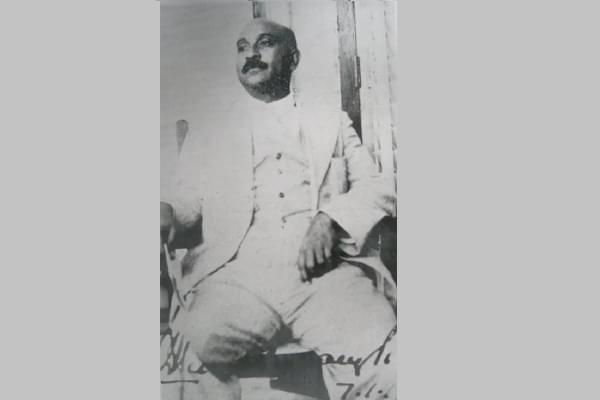
Another pioneering warrior who fought for social emancipation against social stagnation was V.I. Muniswamy Pillai. He was the minister for agriculture in the Rajaji ministry. A fervent supporter of the temple entry bill brought by Rajaji which was strongly opposed by orthodoxy, he stated that the temple entry bill removed the ‘blemishes that are a blot on Hindu religion’ and would ‘go a long way to show the world how sacred our religion is and how pure its worship’.
He was delighted that Article 48 aimed to protect the cow and implied prohibition of cow slaughter. He expressed his joy regarding this:
As a Hindu I feel that the great value of a cow is felt in India and it is a religious sentiment that the cow must be preserved and I feel happy that an article has been brought in this Constitution.
He was also happy that Dr. Ambedkar was the chief architect of the constitution. He placed Dr. Ambedkar within the cultural context of the spiritual and cultural savants of Hinduism:
The scheduled castes have produced a great Nandanar, a great devotee, a Tirupazanalwar, a great Vaishnaivite saint, and above all a Tiruvalluvar, the great philosopher whose name and fame is not only known throughout the length and breadth of India but of the whole word. To that galaxy of great men of Harijans now we have to add Dr. Ambedkar who as a man has been able to show to the world that the scheduled castes are no less important but they can rise to heights and give to the world their great services... He has served the community of the Harijans and also of India by his great service and sacrifice in preparing a Constitution.
P.S. Krishnaswamy Iyengar
A famous lawyer, freedom fighter and Gandhian, he gave his property for Harijan welfare. He made scheduled community students take up law education along with other community students. He adopted a scheduled community boy as his own son.
He often made hoteliers serve scheduled community members without any discrimination. During the marriage of his adopted son, he made the couple come in a two-horse carriage throughout the town thus declaring that all Indians have the right to go in any legal mode of transport they chose to use. His zest for the welfare of scheduled communities was so great that he was called ‘Harijana Iyengar’.
Swami Sahajananda
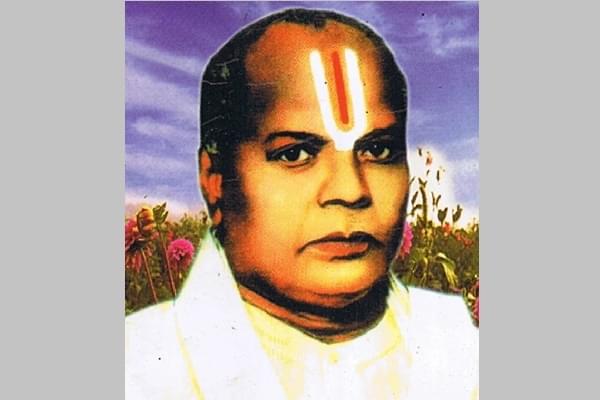
In 1903, an exceptionally brilliant boy, Munuswamy, in the residential mission school of Dindivanam in Tamil Nadu, was given a choice by the school authorities— ‘either convert to Christianity or pay for the free meals we are providing you. If you do not do either of the two, then you will be expelled.’
However, he was adamant. He said ‘No’ to the choice given by the school management: Munuswamy left the school instead of converting to Christianity. He was from a scheduled community and ended up becoming an indentured labourer to a local landlord. It so happened that one day a famous seer ‘Neelamega Swami’ came to this village.
Somehow attracted by this boy’s appearance the seer asked him ‘boy who are you?’ And pat came the reply , ‘I am Parabrahman’. The seer was taken aback. He wanted to discuss spiritual matters with the boy but the villagers objected. The seer could talk to the boy outside the village that too after sunset.
Soon, through the guidance of Neelamega Swami, the boy met one Dakshina Swami at Kanchipuram who directed him to Karapatra Siva Prakasha Swami who initiated the boy into the sage order. Thus Swami Sahajananda was born.
Swami Sahajananda toiled for the education of the girl child and fought for the political and cultural rights denied to the SCs by the dominant anglicized sections of Indian society. An Advaitic sage and also a Member of Legislative Assembly, he established a monastery for the descendants of Nanthanar in the spiritual capital of Shaivism—Chidambaram. Swami Sahajananda promoted indigenous education systems too.
Yet, in the history of Tamil Nadu he is forgotten. Instead, the history of Dravidian racism is passed on as the history of social justice.
Even spiritual monasteries were not free from caste prejudices, Swami Sahajananda discovered. So real spirituality for him was to free the society from this disease of the mind—casteism. Swami became a practical Vedantin and plunged himself into politics.
He founded a temple and an educational trust. Both boys and girls studied in his trust school. His education was both secular and cultural. Apart from regular education he also taught Thirukural, Ramayana, Shaivaite hymns, sayings of Swami Vivekananda etc. At one time he brought the revered Vaishnavaite scholar Prathivathi Bayangaram Iyengar to give Ramayana lectures in Sanskrit at Nandhanar Trust.
Swamiji strongly opposed the racist propaganda made by Dravidian movement like the public smashing of Ganesa idol by EVR and the dramas ridiculing Ramayana through racist narratives. He urged the government to take strong action against such hate propaganda against Hindus.
From 1936 to 1959, he was the member of Madras Legislative Assembly. One of the greatest social reformers of all times, his speeches in the Legislative Assembly provide a great insight into the problem of indigenous educationIdeal education for him took into consideration the native knowledge systems.
He advocated that a separate hour should be set aside for students everyday to learn the local medical system and herbs. This he envisioned would simultaneously bring down medical costs for the society, improve the health conditions and would also provide improved livelihood for the ailing traditional physicians in the villages. He even stated that this would free the society from the tyranny of pharmaceutical industries.
Swami further cautioned that in scheduled community schools Christian teachers should not be appointed. He said care should be taken to appoint teachers from Hindu scheduled community in the schools where majority of the students are from scheduled communities. This was because the Christian teachers indulged in conversion. He further stated that even in appointing Hindu teachers care should be taken that those who were appointed should not subscribe to Dravidian racist ideology (called euphemistically referred to as the ‘self-respect’ movement).
He pointed out the paradox of giving concessions and monetary support to Christian boarding schools in the name of ‘Harijan welfare’. He pointed out that government money was being used for conversions. He wanted the government to concentrate its efforts to provide better sanitary conditions in the economically marginalized urban areas.
He was one of the earliest visionaries to advocate cost-effective toilets along with a complete multi-media campaign for sanitation. He was all for the democratization of sacred spaces in Hindu religion. In his legislative speech on temple entry bill which was brought by Rajaji, he rightly pointed out the Sri Vaishnava tradition in which the premier was brought up and quoted the works of Sri Ramanuja and Bhagavad Gita to prove that there is no bar for any Hindu to enter the temple.
Each of the above leaders had contributed immensely and significantly to social justice in Tamil Nadu. The common chord that connects them all is that they were all rooted in Hindu ethos and were systematically removed from the public conscience by Dravidian propaganda.
These forgotten leaders fought against social stagnation without spreading hatred. Their models have repeatedly succeeded and they have been able to create a perceptible change in the mindset of people who were wedded to casteism. Today, a new generation is coming up that has begun to remember their work. Social workers in Tamil Nadu such as Ma. Venkatesan belong to this tradition of Indic reform. Hopefully this tribe will grow!
Aravindan is a contributing editor at Swarajya.





